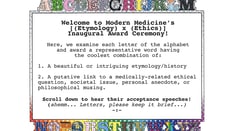TOPLINE:
A study confirms the uptick in psychological distress experienced by healthcare workers (HCWs) early in the COVID-19 pandemic and shows that an artificial intelligence (AI) tool can help detect work-related anxiety and depression.
METHODOLOGY:
Researchers used an AI tool to analyze deidentified psychotherapy transcripts from telehealth visits during spring 2020 for 820 HCWs (median age, 31 years; 91% female) and 820 matched non-HCWs.
Structural topic models were used to determine treatment topics from each conversation.
Anxiety was measured using the General Anxiety Disorder-7 questionnaire and depression was measured using the Patient Health Questionnaire-9.
TAKEAWAY:
More than half of HCWs and non-HCWs (56% and 52%, respectively) were diagnosed with anxiety disorders.
Depressive disorders were more common in non-HCWs than in HCWs (27% vs 8%), and trauma and stress-related disorders were more common in HCWs than in non-HCWs (36% vs 17%).
The AI tool identified three concerns that were significantly associated with moderate to severe anxiety and depression in HCWs, including working on the hospital floor and intensive care unit (P < .001), mood disturbances (P = .03), and sleep disturbances (P = .02).
In contrast, no significant associations emerged between pandemic-related topics and anxiety/depression for non-HCWs.
IN PRACTICE:
"These results suggest that natural language processing may one day become an effective screening tool for detecting and tracking anxiety and depression symptoms," senior author Naomi Simon, MD, a professor in the Department of Psychiatry at NYU Langone Health in New York City, said in a press release.
SOURCE:
The study was led by Simon and lead author Matteo Malgaroli, PhD, Department of Psychiatry, NYU Grossman School of Medicine, and was published online October 24 in the Journal of Medical Internet Research AI.
LIMITATIONS:
The sample consisted of self-referred HCWs and non-HCWs seeking virtual psychotherapy during the first wave of COVID-19 and was skewed toward women and nursing occupations. Topic associations with symptoms were limited to data from validated self-report.
DISCLOSURES:
The study was funded by the National Institutes of Health, the American Foundation for Suicide Prevention, US Department of Defense, and the Patient-Centered Outcomes Research Institute. Talkspace, a mobile psychotherapy company, provided the data for the analysis but was not otherwise involved in the study. Simon consults Axovant Sciences, Genomind, Springworks Therapeutics, Praxis Therapeutics, Aptinyx, and Wolters Kluwer. Full disclosures are included in the original article
Credits:
Lead image: iStock/Getty Images
Medscape Medical News © 2023 WebMD, LLC
Send comments and news tips to news@medscape.net.
Cite this: AI Tool Flags Anxiety, Depression in Healthcare Workers - Medscape - Nov 03, 2023.









Comments